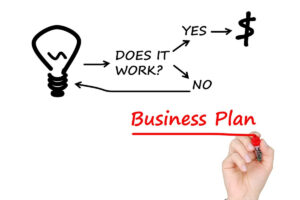Are you tired of setting goals that fall flat and don’t lead to meaningful results? Do you feel like your team is spinning their wheels, with everyone working hard but not making real progress towards your most important objectives?
Enter OKRs – the goal-setting framework that’s taking the business world by storm.
OKRs, or Objectives and Key Results, are a simple yet powerful way to align teams and employees around a common set of ambitious, measurable goals. Originally developed by tech giants like Intel and Google, OKRs have become a go-to method for businesses of all sizes that want to achieve real results.
So, what makes OKRs so special? For one thing, they encourage ambition and innovation. By setting high-level objectives that push the boundaries of what’s possible, teams are inspired to think big and pursue goals that might otherwise have seemed unattainable. And by defining specific, measurable key results that indicate progress towards those goals, teams can quickly identify what’s working and what’s not, and adjust their approach as needed.
But OKRs are more than just a motivational tool – they’re also a way to drive alignment and focus across teams and departments. By setting objectives that are aligned with the organization’s overall strategy, and defining key results that are shared across different teams, everyone can work towards the same goals, and there is greater visibility into progress and challenges. This can lead to a more collaborative, productive workplace where everyone is working towards a common purpose.
While OKRs are a powerful way to align teams and drive results, they can’t be implemented in a vacuum. In order to get the most out of OKRs, it’s important to establish a culture of open communication, regular feedback, and recognition for a job well done. That’s where CFRs come in.
Let’s take a closer look at each of these components:
- Conversations: Effective goal-setting requires ongoing conversations between managers and employees. These conversations can help to ensure that everyone is on the same page when it comes to goals, and can help to identify any roadblocks or challenges that might be preventing progress. By having regular, candid conversations about goals and progress, teams can stay aligned and focused and can make adjustments as needed.
- Feedback: In addition to regular conversations, it’s important to provide ongoing feedback to employees. This can help them to understand how they’re doing and what they can do to improve. It’s important to note that feedback should be both positive and constructive – employees need to know when they’re doing well, but also when they need to make adjustments. By providing regular feedback, teams can stay on track and make progress toward their goals.
- Recognition: Finally, it’s important to recognize and reward employees for a job well done. This can help to build motivation and momentum and can encourage employees to continue working towards their goals. Recognition can take many forms, from a simple “thank you” to a more formal reward or bonus. The key is to make sure that employees feel valued and appreciated for their hard work.
Together, these three components – Conversations, Feedback, and Recognition – form the foundation of a healthy, productive workplace culture that’s well-suited to the implementation of OKRs. By establishing a culture of open communication, ongoing feedback, and recognition for a job well done, teams can set and achieve ambitious goals, and drive meaningful results for the business.
Now let’s take a fun approach to understand how an early-stage startup can use OKRs and CFRs to achieve 10x growth
Imagine you’re a startup founder and you’re on a mission to build the world’s greatest social media platform for pet owners. You know you need to grow your user base and engagement, but how do you do it?
That’s where OKRs and CFRs come in! OKRs are like a roadmap for achieving your goals, and CFRs are the fuel that keeps you moving forward.
So, you start by setting your sights on some big objectives – like acquiring 10,000 new users and increasing daily active users by 50%. Those are some big, hairy, audacious goals, but hey, you’re a startup founder, you thrive on challenges!
To achieve these objectives, you need to focus on key metrics. In this case, that might be user acquisition and engagement. You decide to use a combination of social media advertising and influencer partnerships to acquire those 10,000 new users, and you’ll improve your platform and use targeted email campaigns to boost engagement.
Now, it’s time to get to work! You and your team start hustling to achieve those key results. You’re constantly communicating, making adjustments, and providing feedback to keep everyone on track.
And then, the magic happens! You hit your key results and achieve your objectives. You’ve acquired 12,000 new users and increased daily active users by a whopping 60%! You’re throwing confetti and high-fiving your team because you just achieved 10x growth!
But it’s not just about hitting those big numbers – it’s about the journey. You’ve built a strong team culture of collaboration, communication, and celebration. You’ve learned how to set ambitious goals, communicate effectively, and course-correct when needed. And most importantly, you’ve built a product that’s making pet owners around the world smile.
So, there you have it – the story of how a plucky little startup achieved 10x growth using OKRs and CFRs. If you’re a startup founder, take heart – with a little bit of hard work, a lot of ambition, and a dash of celebration, you can achieve great things too!



